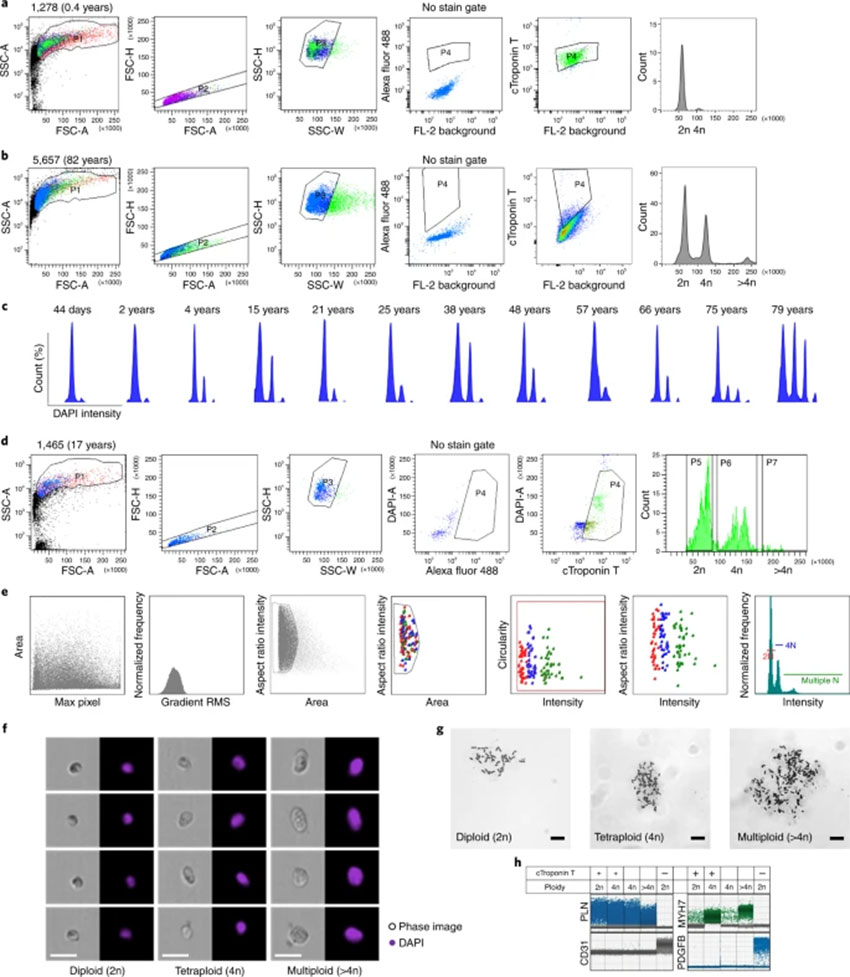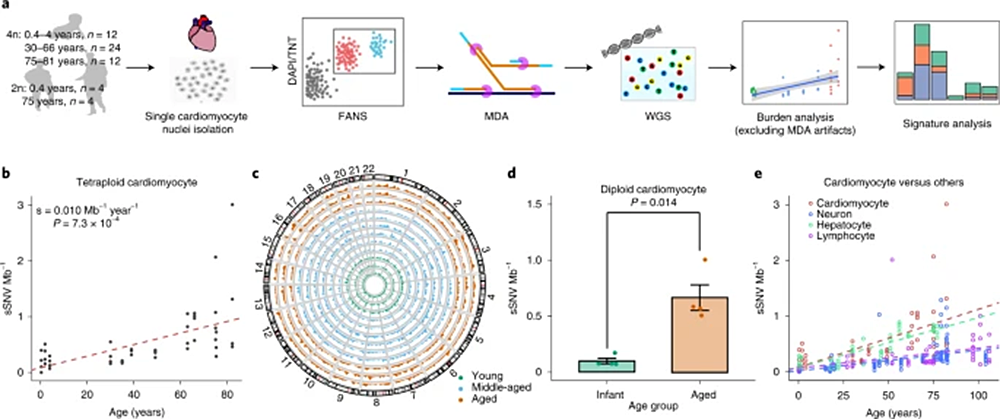As we age, the risk for clogged arteries, brittle blood vessels, and heart failure increase. A recent study looking at the DNA in numerous individual heart cells tells the story of why this occurs
Buildup of Damaged DNA and Faltering Ability to Repair Damage
In a ground-breaking study spanning 0 to 82 year olds, they sequenced the entire genome of 56 heart muscle cells, called cardiomyocytes. What they learned is that as we age, not only does the genetic code get broken down but our ability to repair the damage fades with time.
Rapid Accumulation of DNA Damage in Cardiomyocytes Related to Heart Disease
Cardiomyocytes have a particular problem in that they accumulate DNA damage at three times the rate of other cells, such as neurons. This accumulation of damage can push the heart past a tipping point into disease.
“It may get to a point where so much DNA is damaged that the heart can no longer beat well.” (1)
.

.
The study gives us a new view of heart aging, allowing us to:
“provide a paradigm to understand the influence of aging on cardiac dysfunction” (1)
Cardiomyocytes Wear Down with Age
Cardiomyocytes must pump in unison to provide the proper amount of pressure to allow the blood to get to all extremities of the body. If there is too much or too little pressure, it can damage the tissues.
With accumulated DNA damage however, these pumps begin to break down resulting in high or low blood pressure and heart disease.
Patterns of Heart DNA Damage Lead to Disease
The study is the first to look at heart DNA damage on the single-cell level, where individual mutations can be discovered. Doing so allowed to them to see patterns of similar damage, or map from individuals who smoke or have issues with DNA repair.
Most of these mutations do no harm individually, but with age and as we accumulate more, these mutations can lead to cancer, coronary artery disease or other major health issues.
“Understanding the mutational signatures and their mechanism of formation might lead us to discover the mechanism of DNA damage and disease progression in the aging heart”
.

.
Oxidative Stress Discovered to be Major Culprit
As scientists looked more into the creation of this damage, they realized one culprit for aging of the heart is oxidative stress.
Oxidative stress is a byproduct of a cell’s metabolism, acting like tiny cannon balls to damage cell tissue and DNA inside.
While younger cells can typically fend off oxidative stress, older cells are vulnerable to these attacks, resulting in the accumulation of DNA damage or destroying the mechanism for DNA repair.
